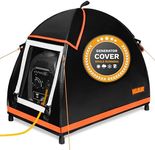Buying Guide for the Best Small Quiet Generators
Choosing the right small, quiet generator involves understanding your power needs, the environment in which you'll use it, and the features that will make your experience more convenient and efficient. Small, quiet generators are ideal for camping, tailgating, or as a backup power source for your home. Here are some key specifications to consider when making your decision.Power Output (Wattage)Power output, measured in watts, indicates how much electricity the generator can produce. This is crucial because it determines what and how many devices you can run simultaneously. Generators typically range from 1,000 to 3,000 watts for small, quiet models. If you need to power small appliances like lights, fans, or a laptop, a generator with 1,000-1,500 watts should suffice. For more demanding devices like a refrigerator or a microwave, look for 2,000-3,000 watts. Assess your power needs by listing the devices you plan to use and their wattage requirements.
Noise LevelNoise level is measured in decibels (dB) and indicates how loud the generator will be during operation. This is important for maintaining a peaceful environment, especially in campsites or residential areas. Generators with noise levels below 60 dB are considered quiet. For comparison, normal conversation is about 60 dB. If you prioritize silence, aim for models that operate around 50-55 dB. Consider where and when you'll use the generator to determine how much noise is acceptable.
Fuel Type and EfficiencyGenerators can run on various fuels, including gasoline, propane, and diesel. Fuel type affects convenience, availability, and storage. Gasoline is widely available but has a shorter shelf life. Propane is cleaner and can be stored indefinitely, while diesel is more efficient but less common for small generators. Fuel efficiency, often measured in run time at a specific load, indicates how long the generator can operate on a full tank. Choose a fuel type that aligns with your accessibility and storage preferences, and consider models with longer run times for extended use.
PortabilityPortability is determined by the generator's weight and design features like handles or wheels. This is important if you need to move the generator frequently or transport it to different locations. Lightweight models (under 50 pounds) are easier to carry, while those with wheels and handles offer more convenience for heavier units. Consider how often you'll need to move the generator and choose a model that you can handle comfortably.
Inverter TechnologyInverter generators produce cleaner and more stable power, making them safe for sensitive electronics like laptops and smartphones. This technology also contributes to quieter operation and better fuel efficiency. If you plan to power delicate devices, an inverter generator is a wise choice. Evaluate your need for stable power and the types of devices you'll be using to decide if this feature is essential for you.
Outlets and ConnectivityThe number and type of outlets determine what devices you can connect to the generator. Common outlets include standard 120V household outlets, USB ports, and 12V DC outlets. Some models also offer parallel capability, allowing you to connect two generators for more power. Assess the types of devices you plan to use and ensure the generator has the appropriate outlets. If you need more power, consider models with parallel capability.
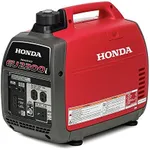

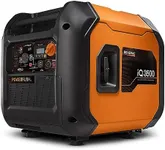
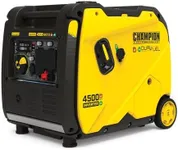




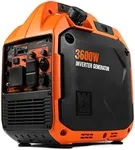

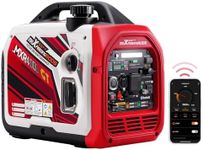

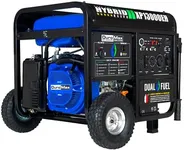

![[Upgraded Version] ALLPOWERS S2000 Portable Power Station 2000W (Peak 4000W) MPPT Solar Generator 1500Wh Backup Battery with 4 AC Outlets for Outdoor Camping RV Emergency Off-Grid](https://images-proxy.bestreviews.guide/YtTaRg6uNv-LaNq9_7sPyzjq62s=/0x150/https://m.media-amazon.com/images/I/31g7wSEKaOL._AC_CX679_.jpg)

